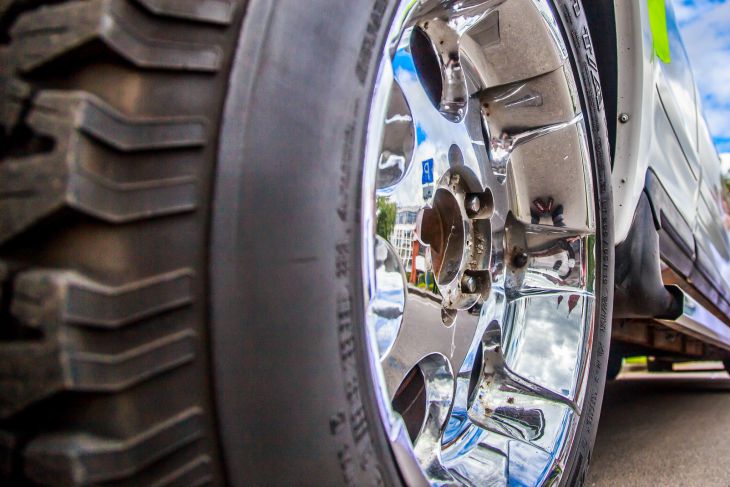Tire companies put various symbols on their products.
In addition to the most basic ones, that is, information about the size, we can also find many other designations.
Some of them look quite mysterious. The colored stripes are a good example. Most drivers have no idea what they are for.

On car forums, you can often find questions from concerned car owners who ordered tires online and, upon receiving their order, discovered that some of them had colored lines painted on them. This is simply the manufacturer's internal markings.
Where do the colored stripes on a tire come from?
As you know, a tire is not just a piece of rubber, but a structure consisting of many interconnected components. The most important of them is, of course, the tread.
Every day, a tire factory produces many different models. Each of them requires its own type of tread. With such a variety, especially in a mass production environment, it is easy to make mistakes.
Therefore, to ensure that a given tread pattern fits the correct model, tire factories often use internal markings in the form of colored stripes. Each factory has its own marking system.
Therefore, it may happen that two tires of the same size and with the same characteristics, but produced in different factories, will have different color stripes. So do not panic if you find a different distribution of color symbols on each of the tires you ordered.
What do the stripes on a tire mean?
Coloured stripes are applied to the tyres to facilitate identification. Each plant uses its own markings, so there is no universal symbolism for the different colours.
The best proof of this is that there is no single, systematic way of applying these symbols.
Pastry stripes (that is their official name) are drawn to indicate specific data required at the production stage.
For example, they can be used to indicate a specific production batch, manufacturing date, or tire size. To find out the entire scheme for applying these markings, just ask an employee of a specific plant.
What does this change for the driver?
In a nutshell: none. The presence of colored stripes on a tire has nothing to do with its driving characteristics. Such tires are no better or worse than "regular" ones.
So from the user's point of view, it doesn't matter whether the tire has stripes (or which ones). Only new tires have stripes, so over time they will simply wear off. And we won't have any problems.
White stripes on the sidewall of the tire - the latest trend or a return to the classics
Basically, both. Not everyone knows, but the first mass-produced tires were actually white.
Initially, zinc oxide was added to the rubber mixture, which resulted in the entire tire acquiring a white or slightly creamy shade. To further strengthen and protect the tread, it was coated with carbon black.
Hence the black tires with white sidewalls, typical of the 1920s and 1930s. White sidewalls are also very popular among motorcyclists.
Earlier we told you how to clean your microwave quickly and easily.








